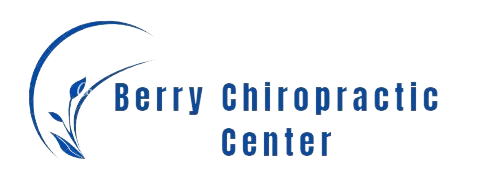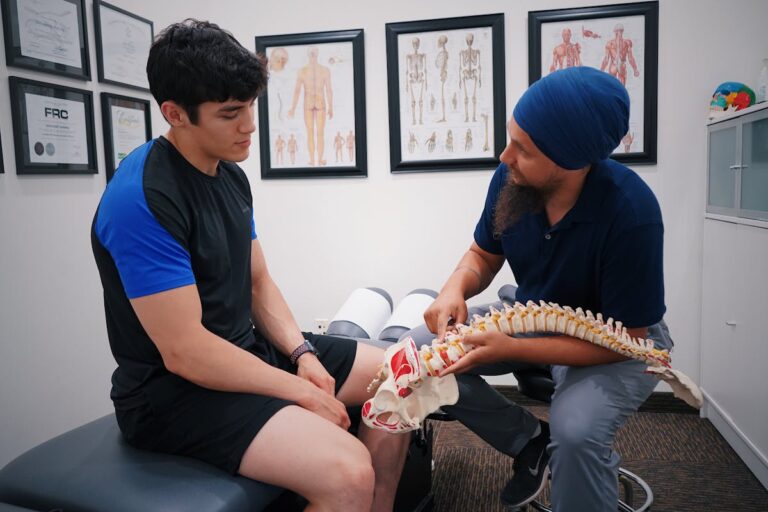Chiropractic neck adjustments, though common for pain relief, carry potential risks. They can lead to serious complications like stroke and spinal cord injuries, particularly in patients with certain pre-existing conditions. Understanding these risks before treatment is crucial. The significant threat to a patient’s health arises in these specific circumstances. Let’s further delve into this critical issue.
Understanding Chiropractic Neck Adjustments
Chiropractic neck adjustments are a non-invasive form of pain relief treatment. This practice optimizes the body’s function and healing through proper spinal alignment. However, it’s not a universal cure, but targets specific musculoskeletal issues causing pain or discomfort.
Misconceptions about chiropractic care, often due to misinformation, include the belief of required indefinite continuation once started. The reality is adjustment frequency is case-specific. A professional chiropractor tailors a plan for each individual’s needs and conditions.
Benefits of chiropractic neck adjustments include significant pain relief and increased movement range. However, potential risks exist, including minor side effects such as discomfort or soreness, and on rare occasions, serious complications. Therefore, making informed decisions is essential when considering this treatment.
Common Neck Adjustment Techniques
Common neck adjustment techniques include Cervical Manual Rotation and Cervical Drop. In the former, the chiropractor rotates the patient’s neck, applies a quick thrust, while in the latter, a special table drops down as a quick thrust is applied to the neck. However, not all techniques involve high-velocity thrusts. For instance, Cervical Mobilization uses slow, gentle stretches to enhance neck motion range. Contrary to common myths, a cracking sound doesn’t always accompany successful adjustment but is merely a gas release from joint spaces. For accurate information and safe treatment, consult professional chiropractors.
Benefits of Chiropractic Neck Adjustments
Chiropractic neck adjustments offer benefits such as enhanced mobility, pain reduction, and improved body function, potentially elevating patients’ overall life quality. This therapy manipulates neck joints, realigns the spine, optimizes nervous system function, and promotes natural healing.
Contrary to misconceptions, these adjustments are typically painless and safe when conducted by a licensed professional. They offer immediate chronic pain relief and correct posture, bolstering overall physical health.
Beyond physical benefits, chiropractic care reduces stress and anxiety, improves sleep, and bolsters mental health, making it a holistic treatment option. Notably, these treatments enhance patients’ quality of life significantly. It’s important to note that chiropractic care may also trigger a release of toxins as the body detoxifies during adjustments. For more details on what toxins might be released after a chiropractic adjustment and how to manage this process, visit this helpful guide on what toxins are released after chiropractic adjustment.
Risks Associated With Neck Adjustments
Chiropractic neck adjustments, although beneficial, pose risks ranging from mild discomfort to severe health issues. Knowledge of these risks is crucial for informed decision-making.
Potential Complications
Chiropractic neck adjustments may lead to complications like strokes, disc herniations, or pinched nerves. These physical issues could cause long-term disability or death. Malpractice can bring legal consequences, including lawsuits, loss of licensure, and substantial financial penalties. Thus, potential complications encompass physical, legal, and professional domains. To mitigate risks, chiropractors must strictly follow established guidelines and best practices. Patients should be knowledgeable about these risks before deciding on chiropractic neck adjustments.
Side Effects Severity
The severity of side effects from chiropractic neck adjustments can fluctuate significantly. This depends on two main factors: the frequency of adjustments and the demographic characteristics of the patient.
- Adjustment Frequency: An increased number of adjustments may escalate the likelihood of side effects, ranging from minor discomfort to serious neurological problems.
- Patient Demographics: The severity of side effects can be influenced by the patient’s age, overall health, and medical history. Older patients or those with certain health conditions may face more severe consequences.
- Immediate Reactions: Post-adjustment, some patients might experience immediate reactions such as dizziness, nausea, or temporary discomfort in the area treated.
- Delayed Reactions: In rare instances, severe side effects like stroke or spinal cord injuries can occur days after the neck adjustment.
Each of these factors plays a critical role in the severity of the side effects experienced after a chiropractic neck adjustment.
Dangerous Outcomes: Worst-Case Scenarios
Three major risks accompany chiropractic neck adjustments: stroke risk increase, potential spinal cord damage, and blood flow disruption. These rare but significant hazards require thoughtful analysis.
Stroke Risk Increase
Chiropractic neck manipulations potentially elevate stroke risk, with studies indicating a strong correlation, especially in relation to vertebral artery dissection causing a stroke type. Strategies for stroke prevention are crucial when considering this treatment. Living healthily can reduce stroke risks, regardless of chiropractic intervention. A comprehensive risk-benefit assessment can guide informed decisions about neck adjustments. Consultation with healthcare professionals is vital before deciding on chiropractic neck adjustments.
Spinal Cord Injuries
Chiropractic neck adjustments carry potential risks including stroke and spinal cord injuries. Spinal cord injuries, which rank among the highest risks, may result from excessive force or improper manipulation. Such injuries can lead to serious neurological issues like paralysis and sensory loss. Recovery often necessitates long, intensive rehabilitation. Legal consequences may include malpractice claims and potential lawsuits, with chiropractors potentially held accountable for patient harm. This highlights the importance of safe practice in chiropractic care.
Disrupted Blood Flow
Chiropractic neck adjustments can disrupt blood flow, posing a risk for life-threatening complications like stroke. This can occur due to two conditions:
- Cervical Artery Dissection: A tear in the cervical artery lining interrupts blood flow to the brain, potentially causing a stroke.
- Vertebral Dissection: A similar tear in the vertebral artery also disrupts blood flow and can lead to a stroke.
Stroke, a result of disrupted blood flow to the brain, can cause severe disability or even death. Other less common complications include dizziness, nausea, and loss of consciousness.
Identifying Problematic Symptoms Post-Adjustment
Post-chiropractic neck adjustment, monitor for unusual symptoms. The adjustment’s timing and frequency can affect potential side effects. Common symptoms include mild discomfort, bruising, or fatigue. Persistent or worsening symptoms demand immediate medical attention.
Symptoms appearing immediately or within hours post-adjustment may signify serious complications, including stroke. Frequent adjustments may cause progressive numbness, weakness, or tingling in arms or legs.
Severe symptoms include balance loss, speech or coordination difficulty, double vision, and sudden severe headache. These may suggest disrupted blood flow or nerve function due to neck adjustment. Prompt identification and action on these symptoms are crucial.
Chiropractic neck adjustments are generally safe, yet understanding potential risks and monitoring post-adjustment symptoms ensure patient safety and treatment effectiveness.
Pre-existing Conditions: Factors of Increased Risk
Chiropractic neck adjustments carry heightened risk with specific pre-existing conditions. Crucial is the knowledge of neck anatomy and potential risk factors for both the practitioner and patient. Patient consent, informed by understanding of procedure’s benefits and risks, is equally significant.
Four conditions notably escalate the risk:
- Osteoporosis: Weak bones due to osteoporosis increase fracture susceptibility during adjustments.
- Spinal cord abnormalities: Existing spinal cord issues can worsen with neck adjustments.
- Blood clotting disorders: These heighten stroke risk, potentially induced by neck manipulations.
- Neck surgeries: Prior neck surgeries can complicate adjustments, amplifying injury risk.
The Importance of Professional Expertise
Professional expertise is vital for safe, effective chiropractic neck adjustments. Understanding chiropractic qualifications mitigates risks from amateur adjustments. Professional competence ensures successful treatment.
Assessing Chiropractic Qualifications
To assess the safety of chiropractic neck adjustments, a chiropractor’s qualifications are crucial. These include:
- Accreditation: Graduation from an institution certified by the Council on Chiropractic Education is necessary.
- Licensure: State-specific chiropractic license, adhering to respective legislative guidelines, is mandatory.
- Continuing Education: Attendance in continuous educational programs ensures up-to-date knowledge of practices and techniques.
- Experience: Proficiency in neck adjustments contributes to procedure safety.
These elements collectively improve the safety and effectiveness of chiropractic treatments.
Risks of Amateur Adjustments
The importance of chiropractor qualifications is paramount for safe procedures, but the risks of amateur adjustments are significant as well. Untrained individuals are sometimes tempted to perform these adjustments, often misled by incorrect information found on unverified online sources. These attempts can lead to serious complications such as stroke, nerve damage, and paralysis. The complexity of a chiropractic neck adjustment demands professional training and comprehensive knowledge of human anatomy. The risk of causing irreversible damage increases dramatically when done by amateurs. Therefore, it’s crucial to debunk incorrect information about adjustments and to always depend on professional expertise for chiropractic care.
Questions to Ask Your Chiropractor
To ensure optimal care from your chiropractor, ask these key questions:
- Experience with neck adjustments? Gauge their proficiency by knowing the number of successful neck adjustments done.
- Adjustment technique? Comprehend the adjustment method they’ll employ and its suitability for your case.
- Chiropractic costs? Discuss treatment charges to avoid surprises.
- Insurance coverage? Confirm if your policy covers chiropractic treatment.
These inquiries ensure safe, effective, and affordable chiropractic care tailored to your needs.
Alternatives to Chiropractic Neck Adjustments
Alternative treatments to chiropractic neck adjustments include massage therapy and acupuncture.
Massage therapy aids in muscle tension relief, circulation enhancement, and flexibility improvement in the neck area. Pain relief extends to both chronic and acute neck conditions. Stress reduction, a result of massage therapy’s promotion of relaxation, alleviates muscle tension indirectly.
Acupuncture, a traditional Chinese medical technique, stimulates healing by inserting thin needles into specific body points. Several studies affirm its efficacy in neck pain treatment. Acupuncture triggers natural painkillers, improves blood circulation, and fosters physical and emotional wellness.
For those seeking additional options for managing chronic pain, Non-Surgical Spinal Decompression in Frederick, Maryland offers an effective, non-invasive method that has gained recognition for its ability to relieve chronic back pain and improve spinal health.
Both treatments are non-invasive and can be used independently or with other therapies. Healthcare professionals should guide the choice between these alternatives, considering the individual’s health status, preferences, and goals.
Precautions to Take Before Adjustments
Before chiropractic neck adjustments, precautions are necessary for safety and efficacy. They include:
- Patient Consent: Obtain informed consent from the patient. Explain the procedure, risks, and outcomes.
- Pre-Adjustment Evaluation: Examine the patient’s medical history, health status, and physical condition. Identify contraindications to neck adjustments.
- Adjustment Frequency: Determine the correct adjustment frequency for each patient. Over-adjustment can cause increased pain or discomfort. Create a plan based on the patient’s needs.
- Post-Adjustment Monitoring: Monitor the patient after each adjustment. Identify and manage potential complications promptly.
These precautions enhance safety and effectiveness of neck adjustments, maximizing benefits and minimizing risks.
Promoting Neck Health: Tips and Tricks
Chiropractic neck adjustments, while crucial, should be complemented by daily neck strengthening exercises for optimal neck health. These exercises boost resilience, flexibility, and reduce injury risk. Ergonomic workstations, featuring adjustable furniture and devices promoting natural postures, alleviate neck strain. By ensuring correct spine alignment, they foster neck health, particularly for individuals spending prolonged hours at computers.
Frequently Asked Questions
How Does Insurance Cover Chiropractic Neck Adjustments?
Insurance coverage for chiropractic neck adjustments depends on policy limitations and deductible mandates. If the treatment exceeds these policy boundaries or the insurer considers it medically unessential, additional costs may be incurred by the patient.
Are Chiropractic Neck Adjustments Suitable for Children and Elderly People?
Chiropractic neck adjustments are suitable for children and elderly with professional health assessments ensuring pediatric safety and geriatric considerations.
What Is the Frequency of Chiropractic Neck Adjustments for Optimal Results?
Optimal results from chiropractic neck adjustments often come from individualized treatment plans, considering patient-specific needs, comfort levels, and adjustment techniques. The frequency of these adjustments varies based on patient’s condition and response.
Can Chiropractic Neck Adjustments Help With Migraines or Other Headaches?
Chiropractic neck adjustments potentially relieve migraines and other headaches. Specific chiropractic techniques address migraine triggers like muscle tension and cervical spine misalignment.
How to Manage Pain and Discomfort After a Chiropractic Neck Adjustment?
Managing post-adjustment neck pain involves alternative therapies like heat or cold application, gentle massage, and light stretching exercises. Each method aids in alleviating discomfort after a chiropractic neck adjustment.






